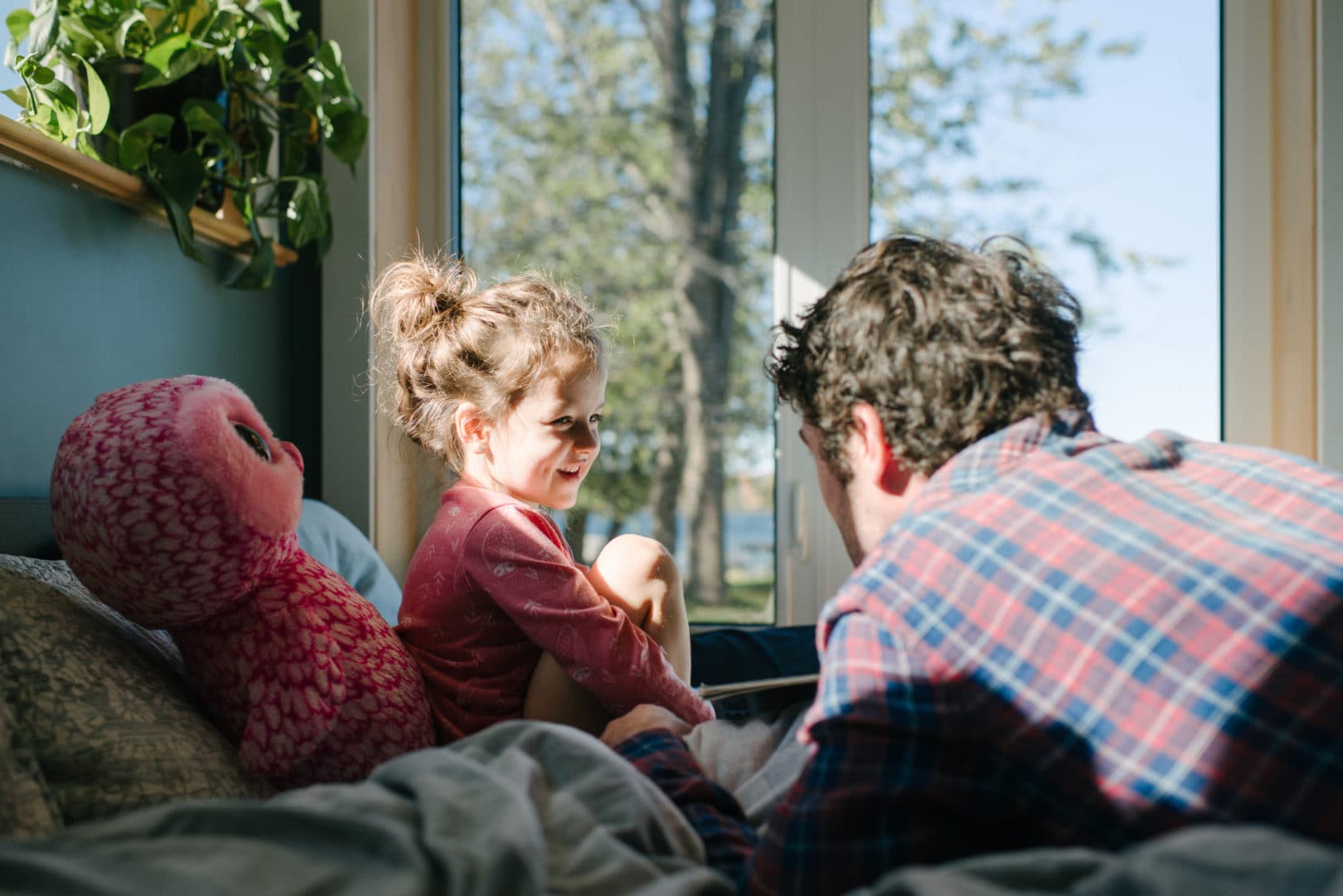When you think of discipline, the first things that come to mind are probably yelling, punishment and timeouts. But what if you looked at discipline as a form of communication with your child instead?
In their book “No-Drama Discipline,” authors Dr. Daniel J. Siegel, and pediatric psychotherapist Tina Payne Bryson turn the idea of behavior and discipline around with eye-opening simplicity. Their goal is to teach parents how to soothe their children’s distress, allowing them to be more receptive to learn and then guide and teach in that quiet, receptive moment.
“If we redefine [discipline] through the lens of teaching and skill-building, we’ll find that much of what we do in the name of discipline is actually counterproductive,” says Bryson. All too often, she says, “Parents respond in ways that amplify distress or make kids go into more reactive states.”
Maybe instead, we can look at our child’s behaviors as clues — clues about the emotional areas they have handled, as well as the other areas where they still need help.
“I have never met a disobedient child, only a disoriented one,” says Kim John Payne, the author of “The Soul of Discipline” and a school and family counselor. “Children who are feeling emotionally off center will often throw out challenging behavior in order to get a response from us. They do this because they can trust us and if we can give them warm, firm and calm boundaries, they tend to feel safe and reoriented.”
The idea of “no-drama discipline” may seem like the holy grail of parenting, on par with homework without tears and a house that cleans itself. But these tips from Bryson can get you started on the path of drama-free, teachable moments:
1. Stop and think
“The point of discipline is to teach and build skills,” says Bryson. If your child throws a toy at you because you’re too busy to play, the usual reaction is some form of punishment. But does punishment teach a child about self-control, patience or not throwing toys?
In this situation you should ask yourself three questions:
- Why did my child do this?
- What is the lesson or skill I want taught?
- What is the best way to teach that?
Listening to the primitive brain response that tells you to yell starts a pattern of drama and combat. Hugging your child, giving your full attention, then talking it out on his level gives him the tools to do better next time.
2. Discuss at the right time
According to Bryson, “the brain can only learn when it’s in a receptive state, not a reactive one. We need to ask, ‘Is my child ready to learn?’ before we attempt to teach and build skills.” When your children are fighting, for example, a lecture will fall on deaf ears. When both parties cool down, you can discover what started the argument and set boundaries to avoid future conflict.
3. Take time to connect
“The best way to get kids from reactive to receptive states is to connect with them emotionally first before we redirect their behavior. This allows us to be more effective disciplinarians so that they become self-disciplined,” explains Bryson. When your daughter cries because she’s overwhelmed with school work, a time management lecture will be met with resistance. Take a minute to understand the root of her frustration and figure out how to help her tackle the workload and improve her study habits.
4. Reconsider timeouts
Parents can give children tools to help them navigate their feelings and become self-disciplined. If your child often needs timeouts, she may be having trouble regulating her reactions to her environment. Instead of sending her to a negative timeout, reconsider timeouts and create a “calm zone” with her favorite things where she can go to calm and soothe herself.
5. Be there for your kids — even when they misbehave
“When kids’ behavior is challenging and they are at their worst, [it’s] probably when they need us the most,” says Byron. When you send your son to his room for misbehaving, one message you may be sending is, “I only want to be with you when you’re doing what I want you to do.” When your child heads to his room, you feel badly, too. Next time he acts out, calm things down, then spend some reflective time together. Cuddle. Connect. Talk. You’ll find you’re soothing your child and yourself.





